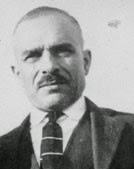
My wife and I took an afternoon off to see The Trip To Italy. It’s the sequel to The Trip, which also starred British
comedians Steve Coogan and Rob Brydon.
They are odd films: no vampires, no
zombies, no comic-book villains from space. That suits me just fine.
Both
Trip movies share a simple set-up: Coogan and Brydon are commissioned to take a dining-and-travel tour. Along the way, they engage in an ego-driven
competition to top each other’s impressions of famous actors and movie scenes.
They often perform the same scenes over and over.
The effect is sometimes hilarious, sometimes annoying—and frequently both.
If
you find Brydon’s Pacino voice grating, you could wear earplugs and still enjoy
The Trip To Italy because the scenery starts off gorgeous and keeps getting
better as they wend their way from Genoa to Tuscany and along the Amalfi Coast.
But then you’d miss the witty historical and literary allusions sprinkled among
the Godfather and James Bond references.
The Italy trip is framed as homage to Percy
Bysshe Shelley and Lord George Gordon Byron, who wandered these same paths
together a couple of centuries earlier.
As a long-ago English major, I
instantly recognized the importance of these two giants of English poetry—and
as a true American, I couldn’t remember a thing either of them wrote.
But I did
remember one fact that the screenwriters either didn’t know or didn't find interesting: Lord Byron spoke Armenian.
This is not a small point, at least to me. I
don’t speak Armenian, although my parents did—and as did everyone in
their lines from antiquity on until I came along.
I’ve always used the excuse
that as a writer, English deserved my undivided attention.
The Byron example shoots that all to hell as he’s considered one of the
greatest poets in English history.
I take solace in this, however: Byron had
time to study Armenian without intrusion because he was on the lam. The
Romantic poet was a bit too romantic for the England of his day, and he sailed
to the Continent for a respite from scandal.
He found inspiration as well as solitude
in Venice in 1816 when he discovered the Armenian monastery on the island of
San Lazzaro. A group of Armenian
Catholic monks had established themselves there the century before to carry on
their own work in exile.
The Mekhitarists, named for their founder, dedicated
themselves to preserving Armenian culture outside the hostile environs of their
occupied homeland. They translated classical Armenian works into European
languages, and European literature into Armenian. Among their most valuable
contributions to the world was the restoration of ancient Greek texts
that existed only in Armenian after the originals were lost.
The monks also
welcomed students who had the discipline and determination to meet their high standards.
Byron confessed that he was initially attracted to the intellectual challenge
as a diversion, but he quickly became an enthusiastic admirer of the Armenian
people and their language.
“Whatever may have been their destiny–and it has
been bitter–whatever it may be in the future, their country must ever be one
of the most interesting on the globe, and perhaps their language only requires
to be more studied to become more attractive.”
Byron noted that some Armenian
students had difficulty mastering the written language (“a Waterloo of an
alphabet”) but he became so adept that he translated Armenian historical
writings and the Epistle of St. Paul to the Corinthians into English—and he wrote
poetry in Armenian, introducing the Western form to Armenian poets who
followed.
He remained in San Lazzaro until the next year before moving on to
Rome, where he completed some of his finest poetry. His friend Shelley joined
him in Italy, and they rented a house on the coast south of Genoa.
Their Italian adventure
ended tragically: Shelley drowned when his boat overturned in 1822. He was 29. Instead
of returning to England, Byron headed to Greece to join the war for independence against
the Turks.
I wonder if he was inspired by his study of Armenian
history, which led him to conclude that “the pashas of Turkey have desolated
the region where God created man in his own image . . .”
Byron lent his fortune
as well as his life to Greece, where he became ill and died in 1824 at age 36.
He is honored by Greeks to this day, and by Armenians. A portrait of Byron
hangs outside the room he occupied in the monastery of San Lazzaro, where the Mekhitarist
fathers continue to do their holy work.
A plaque at the entrance honors this "devoted friend of Armenia who died for the liberation of Greece."


